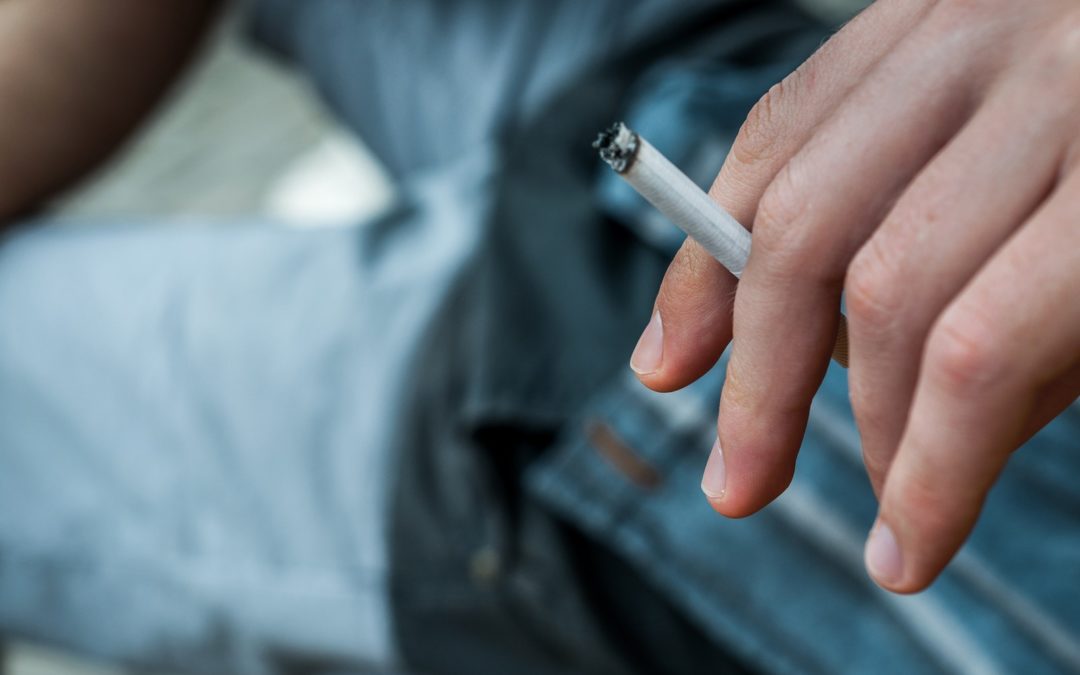Depression can affect anyone, but there is growing evidence that teenagers are suffering from the condition in greater numbers. Programs offered by Clearfork can help manage a teen’s depression, but what are some of the factors that could be contributing, and how else can you help?
What Is Depression?
Depression is a condition often characterized by a low mood and poor self-esteem. There are in fact several psychiatric disorders associated with depression, although they all share certain core symptoms, namely periods of especially low mood and sadness.
Depression as a condition is not to be confused with feeling depressed, which is a normal thing that everyone experiences from time to time. Feelings of depression or sadness, often as a result of a loss or some other negative experience, can be powerful in their impact but pass relatively quickly. Depression as a mental illness differs in that these periods can last for weeks or even months, and be accompanied by a host of other symptoms.

Symptoms of Depression
Some of the key symptoms of depression are prolonged low periods. These periods typically last for at least two weeks, although they can go on for months. Symptoms such as low self-esteem and a profound lack of motivation are also common during depressive periods. Different types of depression have different symptoms. The Diagnostic and Statistical Manual V (DSM-5) is a document that aids in the assessment of mental health problems. By examining the DSM-5 we can get a better idea of how depression symptoms differ.
Major Depressive Disorder
Major depressive disorder (MDD) is a condition often referred to as clinical depression. People suffering from major depression may experience a loss of interest in things they used to enjoy. This can be very sudden and dispiriting and is not the same as boredom or just losing interest normally.
Other symptoms of clinical depression include:
- feelings of worthlessness
- misplaced guilt
- excessive regret
- feeling helpless or like things are hopeless
- decreased concentration
- anxiety
- fatigue
Symptoms of MDD
There are also more physical symptoms, such as changes in psychomotor function. Psychomotor activities are physical actions that arise from mental activity. This includes things like playing a musical instrument, driving a car, writing, playing sports, and so on.
Someone with MDD may experience psychomotor retardation, which is the slowing down of these activities. Conversely, they may also suffer from psychomotor agitation, which results in unintentional, repetitive actions. One example of this is restless leg syndrome, or ‘jittery legs’.
Disruptions or changes to normal sleep patterns are also potential symptoms. The inability to sleep, known as insomnia, is common and can also exacerbate some of the other symptoms like anxiety. Hypersomnia, or oversleeping, can also occur. This in turn can cause people to miss important engagements or responsibilities, which may make feelings of guilt or hopelessness even worse.
Bipolar Disorder
Bipolar disorder is another mental condition that is associated with depression. Also known as bipolar depression, this condition also involves extended periods of low energy and profound sadness. Where it differs from major depression is that sufferers also experience periods of heightened energy and mood. These periods of elevated energy are known as mania, or manic episodes, leading to the condition sometimes being called manic depression.
During these manic episodes, people experience extreme levels of energy and motivation. They may feel unusually happy or easily annoyed. There is also a tendency towards risky behaviors and decisions, regardless of the consequences.
Someone might, for example, make impulsive purchases beyond what they can afford, or say and do things that have negative social consequences. In many cases, impulsive behaviors during manic episodes lead to even more profound regret and self-loathing during the subsequent depressive episodes.

Some Possible Risk Factors
The loss of a loved one or family member is hard for anyone, but it also represents an important potential influence on the onset of a depressive episode. Major loss, rejection, or disappointment can trigger a depressive episode, especially in people who might have a particular vulnerability or predisposition to depression.
One of the main risk factors for teen depression is a family history of depression. A 2015 study published in the National Library of Medicine (NLM) appeared to show that a positive family history for depression made someone more likely to experience a greater amount of depressive episodes over their lifetime.
Research by Stanford University School of Medicine (summarized here) also suggests that you may be two or three times more likely to develop depression if an immediate family member has also suffered from it.
Substance Abuse and Teen Depression
Depressed teens may also be more susceptible to substance abuse, and may abuse alcohol as well in order to help cope with their symptoms. This can have the opposite effect and may actually make them feel worse in the long run.
Depression is also a potential symptom of drug or alcohol withdrawal, which can trap people into addiction in order to avoid the worst of the suffering. The involvement of illicit substances can not only help instigate but also exacerbate teen depression and is an important risk factor to be aware of.
Adolescent Depression
Medically speaking, adolescent depression has the same diagnostic criteria as it does in adults. The onset of puberty also brings with it many behavioral changes and emotional fluctuations which can mask more serious underlying mental health issues. Mood swings are a very common side effect of puberty, and it’s not uncommon for parents to report confusion over what caused instances of irritability or sadness in their teenage children.
A depressed teenager might burst into tears for no clear reason, or have outbursts of misdirected anger. Unlike those associated with puberty, there may not even be a reason offered for these strong emotions, and the teenager may themselves be unsure why they are feeling this way.
Warning Signs to Watch out For
It can sometimes be hard to tell if someone is going through a hard time or if they are suffering from undiagnosed mental disorders. This is especially the case for teenagers, who often have a lot of major life changes to deal with in a short space of time. For those who may be concerned about a loved one, or even themselves, there are some signs and signals that someone may be suffering from untreated depression.
Some teenage depression signs to look out for include:
- Sudden changes in sleeping patterns
- A drastic reduction in appetite
- Unexplained aches and pains, such as headaches and stomach aches
- A pronounced drop in school attendance or attainment
- A trending toward social isolation
- Increased restlessness and agitation
Taking extra risks
You may also notice a seemingly inexplicable increase in risk-taking behavior, especially in the case of bipolar depression. This can come in many forms, such as alcohol abuse, drug abuse, or unprotected sex. The comedown or consequence of these risky behaviors can then contribute to or exacerbate the teen’s symptoms of depression.
Some level of risk-taking is a common part of adolescence and puberty and can help your teen develop their self-esteem, as well as their boundaries. Too much can be dangerous, or one of the warning signs of depression.

Self-harm and Suicidal Thinking
Another important warning sign of a teen’s depression is self-harm, also known as Nonsuicidal Self Injury (NSSI). This can take many forms, but perhaps the most common is the deliberate cutting of the skin, often on the forearms. This can help some people cope with difficult or painful feelings. People who self-harm might find physical pain to be an easier to manage proxy for when they feel overwhelmed.
In order to conceal these injuries, people might wear long-sleeved tops more frequently, for example, or suddenly go out of their way to avoid showing bare skin. It is important not to jump to conclusions in these cases, as NSSI is not necessarily a sign of suicidal thinking. Some people report that these acts actually help prevent suicidal thoughts from manifesting.
That said, suicidal ideation is a serious warning sign that someone may be depressed. Expressing the desire to take one’s own life, or wishing they were dead is a clear signal that something is wrong. It can be very distressing for a parent or loved one to hear these things from their child, but it is important to take it seriously while trying not to react in a way that closes them off from sharing such things again.
Suicide and Depression
Not everyone who suffers from depression will experience persistent suicidal thoughts, although suffering from depression represents a significant risk in this regard. Sometimes, a suicide attempt may be a cry for help, and it is vital to pick up on these signals and give them the help they need.
According to a 2018 study in the International Journal of Environmental Research and Public Health (IJERPH), half of all completed suicides are linked to depression or other affective disorders.
Suicide is also the third leading cause of death for teenagers. One study (also by the IJERPH) shows that over 90% of teens who die by suicide have been diagnosed with one or more psychiatric disorders, most often major depression.
This demonstrates how important suicide prevention programs are. If you are worried that you or a loved one may attempt suicide, please contact a mental health professional immediately, or call the national suicide prevention lifeline (also known as the 988 Suicide & Crisis Lifeline), or another suicide hotline.
Rates of Depression Amongst Teens
According to the Centers for Disease Control and Prevention (CDC), 8.4% of children between six and seventeen years old were diagnosed with depression in 2011-2012. The number of teenagers suffering from depression has since risen. The National Institute of Mental Health (NIMH) reports that 17% of young adults between twelve and seventeen years old experienced at least one major depressive episode in 2020. This amounts to over 4.1 million teenagers experiencing MDD.
When compared to the rates of adults who have experienced depression, we can see that teenagers are at a greater risk. The same NIMH report showed that around twenty-one million adults experienced at least one major depressive episode in 2020, which represents 8.4% of American adults. This means that teen depression is over twice as common as it is in adults.
Contributing Factors to Teen Depression
With so many teenagers suffering from depression symptoms, it is crucial to understand what factors might be leading to the rise in cases. Young people go through a lot of developmental changes during their teenage years, during which they have an extreme sensitivity to social evaluation. This means that things such as peer pressure, social standing, and friendship groups are more impactful than at any other time.
Social Media
The advent of social media has generated a huge amount of social change in a very short space of time. A teenager today will have in their pocket a device that can instantly connect them to millions of people, while their parents are not likely to have even had a computer or mobile phone at all when they were growing up.
This creates a whole new level of social pressure on teenagers, who are being photographed and recorded far more than previous generations. Most teens are on some form of social media, which means they can be judged, praised, or bullied by their peers constantly.
Body image and self-esteem are under threat as a result of social media use, as a teen’s life is often being displayed to others in near real-time. The quick-fire, visual nature of social media platforms invites comments on pictures and videos, with public comments often remaining in place seemingly indefinitely.
There is growing concern over the mental health impacts of social media use among teenagers, and the current rise in rates of depression also roughly coincides with the spread of smartphones and social media.
School Pressures
High school is a tricky time for many teens, with social and academic pressure increasing each year. Many teens face high expectations and an even higher workload. This comes on top of trying to juggle the sometimes volatile changes brought by puberty, as well as maintaining a positive social standing within the school community.
For these reasons, it is not uncommon for teenagers to display troublesome behaviors, such as aggression or avoidance. These pressures can also contribute to teen depression. With exams and other assignments, many teens can end up feeling like the course of their whole life depends on academic success at that one moment in time.
Many people suffering from depression report extreme responses to failure or rejection. This can make academic attainment even more stressful and lead to spiraling negative thoughts.
Teen Depression and the Covid-19 Pandemic
The COVID-19 epidemic resulted in the deaths of millions of people across the world, as well as untold related hospitalizations. Efforts to slow or halt the spread of the disease often took the form of strict restrictions on social and public activity, otherwise known as lockdowns. While these lockdowns undoubtedly saved lives, they also led to profound and widespread mental health impacts, which we are only just beginning to understand.
One of the groups most affected by these lockdowns is adolescents. Their sensitivity to social dynamics, coupled with the increased academic pressure made them especially vulnerable to the impacts of lockdowns. No longer able to physically create and maintain relationships, while losing access to all the systems of support typically offered by schools meant that many teenagers experienced worsening anxiety and depression.
A survey of high school students by the CDC published this year revealed that over a third of respondents experienced poor mental health during the pandemic. A further 44% reported feeling persistently sad or hopeless during the pandemic, common symptoms of teen depression.

How to Help
Fortunately, there are many ways you can help manage teen depression. One place to start is to speak with a mental health professional. They can help assess the situation and see if there are any other mental health conditions that could be present. Depression symptoms can be similar to other mental disorders, such as borderline personality disorder. An accurate diagnosis is necessary for effective support.
Parents who are concerned could first speak with their child’s doctor, who will be able to share their advice, as well as put them in contact with specialists in adolescent psychiatry. Some depressed teens might prefer to speak with someone separate, such as a school counselor. They can provide a safe space to discuss why they feel sad or depressed, and also help them seek professional help when they are ready.
Spending time with friends or family can also be a good way to not only bring attention to the problem but also to maintain the social bonds and enjoyment that can be lost as a result of depression.
Treatment Options
Once they have agreed to engage in treatment, there are a number of ways they can receive help. Treatment facilities can create custom programs tailored to a person’s individual needs and circumstances.
Some strategies that can help are getting regular physical exercise and forming routines of going outside at least once a day. Some people also find writing stories to be a good way of getting uncomfortable thoughts out of their heads and onto paper, where they can seem more manageable.
These kinds of strategies are a good way of taking control of one’s own treatment. Aside from these examples, the main kind of treatment they are likely to receive at first is therapy.
Therapeutic Treatment
The use of talk therapy can help people understand their condition, as well as cope with it. A mental health professional might suggest something like cognitive behavior therapy (CBT) to treat teen depression. This can provide useful strategies for managing manic or depressive episodes, as well as helping to tackle any underlying issues which could be contributing.
Family therapy may also be suggested. This kind of therapy can help family members understand the teen’s feelings, as well as how to help support them in times of need. It can also bring to light circumstances which may explain why the teen is depressed, which might be too difficult to speak about otherwise.
Medical Treatment
Alongside therapy, there are other kinds of medical care that are used to treat depression. Pharmaceutical approaches, such as antidepressant medications, are used to help mitigate some of the symptoms. Antidepressants and selective serotonin reuptake inhibitors (SSRIs) must be prescribed by the teen’s doctor and taken under medical supervision in order to ensure the correct dosage and avoid any side effects.
Clearfork Academy
Here at Clearfork Academy, our experts in adolescent psychiatry can help your teen overcome the hurdles they are facing. We offer programs ranging from art and music therapy to medical detoxes for those suffering from the effects of drug or alcohol abuse. Our therapeutic solutions include family therapy, individual therapy, to adventure therapy. Get in contact now to find out more about how we can work together to combat teen depression.
Austin Davis, LPC-S
Founder & CEO
Originally from the Saginaw, Eagle Mountain area, Austin Davis earned a Bachelor of Science in Pastoral Ministry from Lee University in Cleveland, TN and a Master of Arts in Counseling from The Church of God Theological Seminary. He then went on to become a Licensed Professional Counselor-Supervisor in the State of Texas. Austin’s professional history includes both local church ministry and clinical counseling. At a young age, he began serving youth at the local church in various capacities which led to clinical training and education. Austin gained a vast knowledge of mental health disorders while working in state and public mental health hospitals. This is where he was exposed to almost every type of diagnosis and carries this experience into the daily treatment.
Austin’s longtime passion is Clearfork Academy, a christ-centered residential facility focused on mental health and substance abuse. He finds joy and fulfillment working with “difficult” clients that challenge his heart and clinical skill set. It is his hope and desire that each resident that passes through Clearfork Academy will be one step closer to their created design. Austin’s greatest pleasures in life are being a husband to his wife, and a father to his growing children. He serves at his local church by playing guitar, speaking and helping with tech arts. Austin also enjoys being physically active, reading, woodworking, and music.




